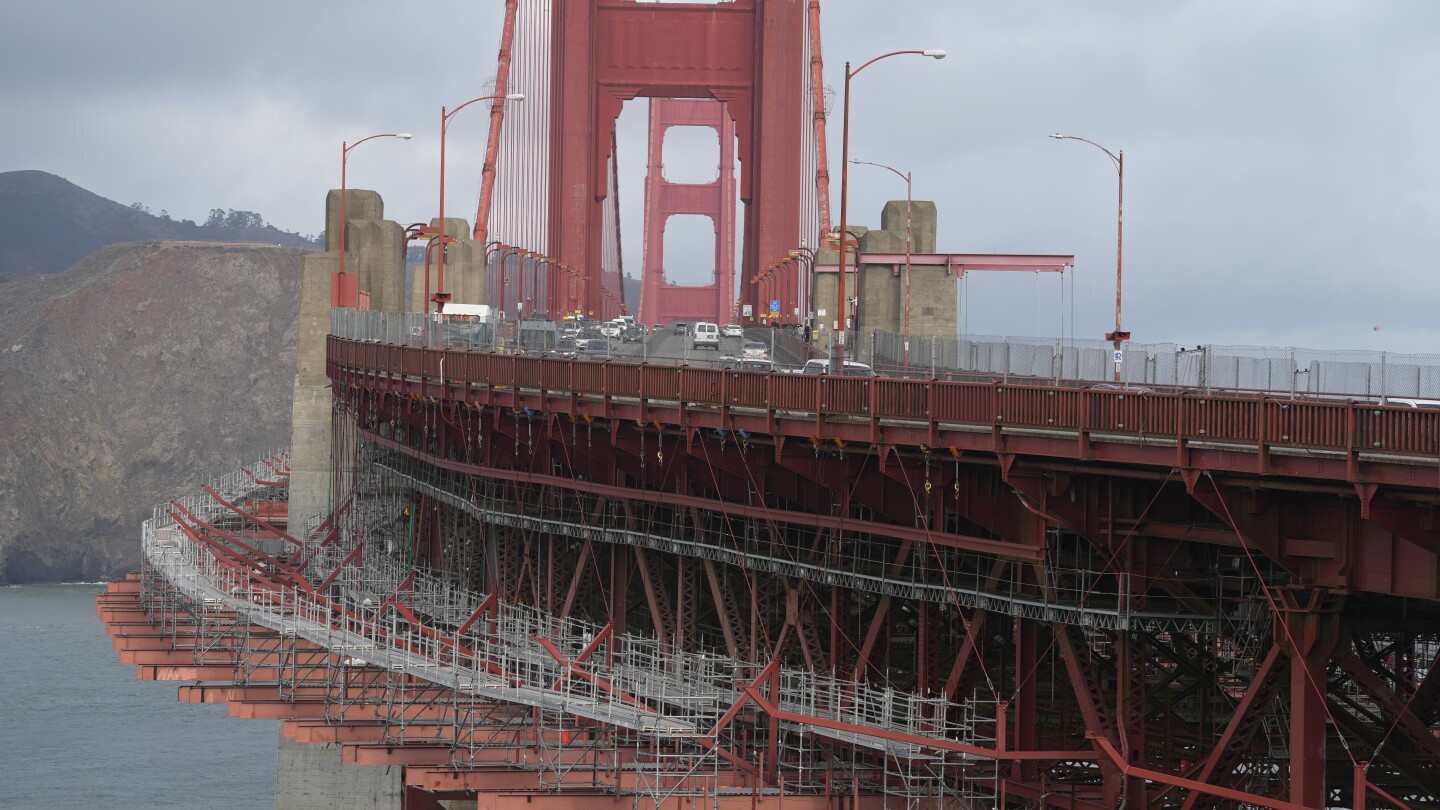Kevin Hines regretted jumping off San Francisco’s Golden Gate Bridge the moment his hands released the rail and he plunged the equivalent of 25 stories into the Pacific Ocean, breaking his back.
Hines miraculously survived his suicide attempt at age 19 in September 2000 as he struggled with bipolar disorder, one of about 40 people who survived after jumping off the bridge.
Hines, his father, and a group of parents who lost their children to suicide at the bridge relentlessly advocated for a solution for two decades, meeting resistance from people who did not want to alter the iconic landmark with its sweeping views of the Pacific Ocean and San Francisco Bay.
On Wednesday, they finally got their wish when officials announced that crews have installed stainless-steel nets on both sides of the 1.7-mile (2.7-kilometer) bridge.
“Had the net been there, I would have been stopped by the police and gotten the help I needed immediately and never broken my back, never shattered three vertebrae, and never been on this path I was on,” said Hines, now a suicide prevention advocate. “I’m so grateful that a small group of like-minded people never gave up on something so important.”
Nearly 2,000 people have plunged to their deaths since the bridge opened in 1937.
City officials approved the project more than a decade ago, and in 2018 work began on the 20-foot-wide (6-meter-wide) stainless steel mesh nets. But the efforts to complete them were repeatedly delayed until now.
The nets — placed 20 feet (6 meters) down from the bridge’s deck — are not visible from cars crossing the bridge. But pedestrians standing by the rails can see them. They were built with marine-grade stainless steel that can withstand the harsh environment that includes salt water, fog and strong winds that often envelop the striking orange structure at the mouth of the San Francisco Bay.



Don’t be so sure about that. Check out some of this research.
Believe it or not, reducing access to lethal means actually reduces the number of deaths by suicide, and we have robust data to back this up.
“Nine out of ten people who attempt suicide and survive will not go on to die by suicide at a later date. This has been well-established in the suicidology literature. A literature review (Owens 2002) summarized 90 studies that have followed over time people who have made suicide attempts that resulted in medical care. Approximately 7% (range: 5-11%) of attempters eventually died by suicide, approximately 23% reattempted non-fatally, and 70% had no further attempts.”
https://www.hsph.harvard.edu/means-matter/means-matter/survival/
We ALSO need to improve people’s material conditions and provide better mental health care. But even in societies with strong social safety nets, people still die by suicide. Reducing access to lethal means will reduce deaths, giving people time and opportunity to access any social safety net that exists.
There’s one particularly fascinating case study out of Washington state:
"Running perpendicular to the Ellington Bridge, a stone’s throw away, is another bridge, the Taft. Both span Rock Creek, and even though they have virtually identical drops into the gorge below - about 125 feet - it is the Ellington that has always been notorious as Washington’s “suicide bridge.” By the 1980s, the four people who, on average, leapt from its stone balustrades each year accounted for half of all jumping suicides in the nation’s capital. The adjacent Taft, by contrast, averaged less than two.
After three people leapt from the Ellington in a single 10-day period in 1985, a consortium of civic groups lobbied for a suicide barrier to be erected on the span. Opponents to the plan…had the added ammunition of pointing to the equally lethal Taft standing just yards away: if a barrier were placed on the Ellington, it was not at all hard to see exactly where thwarted jumpers would head.
Except the opponents were wrong. A study conducted five years after the Ellington barrier went up showed that while suicides at the Ellington were eliminated completely, the rate at the Taft barely changed, inching up from 1.7 to 2 deaths per year. What’s more, over the same five-year span, the total number of jumping suicides in Washington had decreased by 50 percent, or the precise percentage the Ellington once accounted for."
And you know why twice as many people jumped off the Ellington vs. the Taft bridge in the first place? Because the railings on the Taft were slightly higher and therefore harder to scale.
I don’t know if this article is paywalled or how to fix that, but it also contains details of a specific study conducted on people who intended to, but didn’t jump off the Golden Gate bridge specifically. The absurdity of how minor an obstacle was required to prevent their deaths is amazing.
https://www.nytimes.com/2008/07/06/magazine/06suicide-t.html
Woops, looks like I’m wrong in my comment!
Thank you so much for sharing the NY article, I still need to read it more times and take notes! For other people interested, it can be read at https://archive.is/Uuyx3. I definitely wasn’t aware of this impulsive behavior when it came to suicide and the low rate of re-attempt that follows. I was surprised when I read the following:
I had a vision of suicide where it happened in a more nihilistic and complex way, or at least, something veery different from deciding you would kill yourself in 5~ minutes. I also wasn’t aware that 2000 people had died at the golden gate, it does indeed sound like many of these cases are rushed or not premeditated. More importantly, the “Ellington barrier” example is a solid argument to install such barriers
I encourage others interested on the topic to read the article!
I am one of those nine. It is absolutely true. As you are dying, you realize what a mistake you’re making. I’m glad I survived.